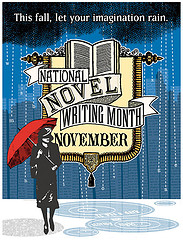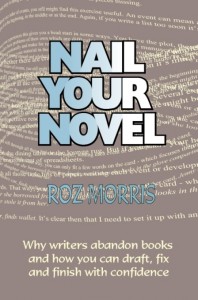The news story this July 4 is that Thomas Jefferson didn’t get it all right on his first try! Seems when Jefferson was writing the Declaration of Independence he erased some words and substituted others. It’s a writer’s biggest nightmare. Imagine readers being able to compare your sad looking first draft with the polished, and often completely different, final draft. If Jefferson could, I’m sure he would swoop down and tell those nosy historians, “No, no. Don’t look at that stuff. Here’s the finished piece.”
Jefferson thought he was effectively destroying those mistakes by erasing words and writing new words in place. Welcome to the world of hyperspectral imaging, Tom! It seems nothing is gone forever.
Being a neurotic person(what writer isn’t?), I “save” any large sections I cut out of my work—just in case I change my mind and want to put it back into my writing. I worry that eventually I’ll decide those original sentences were brilliant and be unable to recreate their perfection. Funny thing is, I rarely look at the “miscellaneous” file where I store the sections that don’t make the cut. If I do decide to reinsert the original work I usually write it fresh. Perhaps having the “miscellaneous” file is more of a superstition. If I don’t have it I may need it. Be prepared. And I was never even a Boy Scout!
When a piece is finished I normally save the “miscellaneous” file along with the finished piece on a disc. Of course, now that I’ve heard about Tom’s dilemma I’m rethinking that habit. Do I really want people reading my first drafts and terrible mistakes when I’m a famous(dead) writer and not here to defend myself?
So how about you? How to you treat the paragraphs, sentences, and chapters you cut out of your work? Save them? Run them through the shredder? Toss them in a bonfire?
If you want to learn more about Jodi's weird writing habits stop by her blog Words by Webb
Viewing: Blog Posts Tagged with: first draft, Most Recent at Top [Help]
Results 26 - 36 of 36
Blog: WOW! Women on Writing Blog (The Muffin) (Login to Add to MyJacketFlap)
JacketFlap tags: changes, first draft, Thomas Jefferson, Add a tag
Blog: Darcy Pattison's Revision Notes (Login to Add to MyJacketFlap)
JacketFlap tags: description, first draft, how to write, development, how to create, describe, flesh out, book, fiction, novel, character, characters, Add a tag
Mini-Conflicts Help Characters Stand Out
For my WIP, I’m spending the week fleshing out characters.
I”ve written about characters many times.
Here’s a Character Checklist, and 15 Days to a Stronger Character, and many other posts on character.
At this stage in character development, I’m mostly concerned with creating an interesting mix. For this story, there’s a crowd of characters which could get confusing for the reader unless each character is, well, a character! Unique. Compelling.

They must be different in at least these ways:
Description. I need a wide variety from fat to anorexic, tall to short, white to black, and young to old. Beyond that, there are so many variations! Hair can be wild or tame, big or missing.
Eyebrows fascinate me: drawn on or so hairy that they grow together in the middle.
Teeth: laser white, yellow, rotten, dentures, cracked, gaps.
Speech: With a background in speech pathology, I pay attention to this one for sure. I try not to put stuttering in too much (which means I never allow myself to do that for fear of doing it too much). Accents are a way to distinguish someone. Dialects are fascinating to study, for example the difference between Bostonians and New Orleans residents.
Movement: Those teens who sag&bag, walk with one hand on their waist band, hitching up the shorts/pants every other step. (Watch Pants on the Ground – the man who inspired a surge in the belt market.) Something like that, tied to the unique clothing style is what I’m looking for.
Create Mini-Conflicts
Of course, there are other ways, but you get the idea. What I’m especially looking for is the interaction between characters and their descriptions. For example, if there’s a sag&bag teen, there needs to be another character who despises that type of dress; and of course, those two characters need to come into direct conflict.
I’m matching up the characters for mini-conflicts like this. They won’t be the main plot, but will add comic relief, extra bits of tension, and variety to the novel. Doing this at this early stage will build in more potential, more material to work with as I start the first draft.
How do you make your characters stand out?
PR Notes Question of the Week
If you didn’t see Sunday’s post, I’ve asked a question about book promotion: If you had $1000 to spend on book promotion, how would you spend it? I’d love to hear a wide variety of responses this week. Please comment here.
 Add a Comment
Add a Comment
Blog: Darcy Pattison's Revision Notes (Login to Add to MyJacketFlap) JacketFlap tags: author, progress, NaNoWriMo, first drafts, first draft, how to write a novel, word count, writing career, finish, write a book, Add a tag
NaNoWriMo and the Evolution of a WriterGuest post by Beth Cato.Follow her NaNoWriMo progress at her blog, Catch a Star if It Falls. For years I dreamed of being a published writer, but I didn’t actually write anything. I had plenty of excuses – college, a full-time job, marriage – but I couldn’t stop that yearning to create stories. NaNoWriMo changed everything.
NaNoWriMo offered a firm deadline and a supportive community, but most of all, it taught me discipline. If I could write 2,000-words-a-day during a November, I could do it all year long. If I dared to post excerpts of my novels-in-progress, I could work up the nerve to submit my work to agents and editors. But it’s been a gradual process, and it reflects my personal maturity as well as the maturity of my writing. 8 Years of Writing2002Too afraid to start a work from scratch, instead I wrote a fictionalized autobiographical piece about a disastrous family trip that took place when I was ten. About a week into the November, I posted on the NaNoWriMo forums and declared myself a failure. I was working ten-hour shifts four nights a week, and I was far too tired to write when I got home. My fellow writers encouraged me to keep going. I did. I forced myself to type 5,000-7,000 words on each of my nights off and I made my goal. 2003I dove into my first original novel effort about a ghostly unicorn, an abused girl, and selkies. No outline, no real plot. I felt tremendously proud of achieving my 50,000-words, but when I re-read my work a few months later, and I was stunned to find it made little sense and my heroine had zero personality. Ouch. 2004My husband was on full naval deployment and I was entering my second trimester of pregnancy. Writing was a bit tricky since I felt nauseous if I sat at the computer for more than thirty minutes at a time. I somehow fulfilled my 50,000-word goal for MOUSE, and the novel wasn’t even close to completion. 2005With my husband gone again, an infant crawling underfoot, and under the burden of constant fatigue, I resolved to finish MOUSE. But when my husband returned home partway through the month, I stopped writing at 38,000 words. I didn’t have the energy to walk to the mailbox, much less type. 2006I was not going to fail again. I did most of my writing via a laptop while my son watched his two favorite TV shows – Sesame Street and The Price Is Right. The story wasn’t done when we went on a Thanksgiving trip to California, so I brought the laptop along and finished the novel at my parents’ house. I did it. For the first time, I felt I had something that might be publishable. 2007Queries for MOUSE led to agent rejections, but I wasn’t giving up on the dream. THE LOCKED DOOR followed the cross-dimensional adventures of a disillusioned Navy wife. I finished my 50,000 words on November 19th, and then completed the novel in January. I learned my lesson: now I was going to write and edit all year long, not just in November. 2008After the concept for NORMAL came to me in a dream, I knew this plot would mean trouble. I began researching in May and read and bookmarked my way through five books on anatomy and emergency medicine. Full chapter outlines and character biographies guided my writing, and my word count exploded. In twenty-four days I churned out 74,000-words on my superhero urban fantasy, NORMAL. I finished writing the novel in January and February, and after receiving critical professional feedback, rewrote the entire thing in autumn 2009. 2009I intend to start on a sequel to NORMAL. I may be a slow learner, but I’m getting better every year. Lessons from NanoWriMoWhat have I learned from slogging through this masochistic ritual
The tears, carpal tunnel, and sleep deprivation are worth the effort. Nothing compares to seeing that completed progress bar on the NaNoWriMo site. “I wrote a novel. I did it. I made the time. I’m an author.” Once you experience that high, you’ll understand why suckers like me keep coming back every year. Related posts: Blog: Darcy Pattison's Revision Notes (Login to Add to MyJacketFlap) JacketFlap tags: how to write a novel, outline, confidence, NaNoWriMo, plan, resource, first drafts, first draft, revise, Add a tag
Review of Nail Your Novel by Roz MorrisBritish author and writing teacher Roz Morris has a new book out just in time to help you with that first draft of your new novel. You know, the one you’re going to write in November for National Novel Writing Month, better known as NaNoWriMo. Hiccups in your Confidence and MotivationMorris writes with great wit and wisdom about the writing process, starting with those awkward moments when you actually admit, “Yes, I’m, uh, writing, well, you know, something a bit longer. Maybe, a, uh, a novel.” Writing always begins here, by acknowledging the writer as a person with the usual insecurities. Morris address this directly by providing you with some structure. No, structure isn’t for everyone, but for beginners, structure can be a comfort and save them a lot of time. Her process involves a series of tasks, breaking down the process into smaller steps:
Help for NaNoWriMo writersAuthors embarking on the month-long adventure of writing 50,000 words in November will appreciate the first few tasks. Morris gives you direction on how to thicken the plot, find inspiration, decide what does NOT belong in the book, accept random input, and generally get the overall story thought out. Research (Task 3) can flesh out details further:
Overall, Morris’ experience enhances the book. This is a process she is intimately acquainted with and daily practices. Even if you’re experienced, I recommend the book as a review for concepts you already know. Because I think you’ll also find some unexpected nuggets. And for more nuggets, read Roz Morris’ blog, Dirty White Candy (Yes, a strange name for a blog, you say. Morris explains it on her home page). Example of her posts: How to Make Readers Root for Your Character
Related posts:
By: Samantha Clark,
on 8/20/2009
Blog: Day By Day Writer (Login to Add to MyJacketFlap) JacketFlap tags: Writing, novels, Revising, first draft, Add a tag
Today was the first day in my work on my new novel that the words stumbled a bit. I made my goal, which is great, but I know this chapter is one that will definitely need work when I get to the revision stage. I said in my Getting creative blog post a couple days ago that if something doesn’t work right now, that’s ok, because it can be fixed in the revision stage, and a commenter, OwlandSparrow described that as “freedom.” I love that! I hadn’t really thought of it that way, but it’s a great way of putting it. The first draft is about freedom, the freedom to explore the story, the characters, the action, the dialog, etc. A lot of writers begin each writing session by going through what they did in the last session and editing it, to get the story back in their heads. I used to do this, after hearing it described as a useful tool at a seminar, but after a while, in my limited writing time, I found myself editing more than I was writing, so I stopped. Now I just move on. Now, don’t get me wrong. Lots of people use this method of writing and love it, and if it works for you, that’s great. Don’t change a thing. I think it’s especially useful if you aren’t writing every day. If I miss a day, I often have to go back so I can get into the flow of the story again. But for me, I try not to read with an editor’s eye, just with the story in mind. The first draft of a story is about learning, experimenting, exploring; it’s about a journey and finding the path from the story’s beginning to the end, as circuitous that path might be – the direct line isn’t necessarily the best at this point. It reminds me of something my old theater teacher in college told me, that when exploring a role, I need to try it the most outrageous way I can think of and then the most subtle — the full range — then, I can find the place in the middle that works best to tell the character’s story. In our first draft, we can be as outrageous as possible without worrying about whether it’s great writing. Then later — in our revision — we can scale it back to just the right place, and make the writing brilliant. After spending months and months and months revising my first novel, I’m really enjoying being back on a first draft, enjoying the freedom of whatever goes. What are you enjoying today? Write On! P.S. Here’s something else I’m enjoying today. My husband sent me this video and I thought it was just so much fun, I wanted to share. Enjoy! 
3 Comments on Freedom of the first draft, last added: 8/21/2009
Display Comments
Add a Comment
Blog: Plot Whisperer for Writers and Readers (Login to Add to MyJacketFlap) JacketFlap tags: first draft, Martha Alderson, plot whisperer, Blockbuster Plots for Writers, Add a tag Today's post is similar to the last post as far as information goes but revolves around one specific writer's dilemma (2-hour plot consultation occurred earlier in the year). Thought it might be helpful to others. Question: ...Wishing you a wonderful summer. It`s like hell in Southern Norway, a three week heatwave is just about to drain all energy from nearly everybody, but I guess we`ll survive. Hope all is well with you. I`m having trouble finishing my book, don`t know how to continue to the end. It may be better as soon as the heat goes, hope so. I look at your scene tracker every day, again and again and I see how clever you are to grip the meaning and help writers like myself. But now? The more I read it the worst it get. Maybe I should get one hour with you if it get any worse? Answer:
I'm sorry about your weather. I do wonder how much the heat is contributing to and influencing your lack of progress. I send you thoughts of a cool and calming air floating through your mind and bringing peace, both with the temperature, but mostly with your story. Don't forget: the first draft is supposed to be like "vomit-on-the- page" -- horrible, embarrassing, messy, infantile, etc.... No matter how terrible, once you have a first draft, you are then able to refine, hone-in, smooth out, bring meaning and beauty to your work. A first draft is critical both for the final product, but also for you to know you have finished what you started (though there will obviously still be lots of work to do). You are being tested. Writing to the end is not for the faint- hearted. I know you can do it!!!! I'm always available for another hour. I'm more than happy to get you back on track. See how you feel and let me know. Three links you may like to read: 1) my blog speaks a bit about what you are going through -- http:// plotwhisperer.blogspot.com/ 2) the page to sign-up for another consultation, if you so decide -- http://www.blockbusterplots.com/consult/ongoing.html 3) my 89 year-old Swedish-born mother's blog I thought you might get a kick out of reading -- http://svensto.blogspot.com/ I believe in you!!! Keep at it...... Response: Thank you so much. What you said about the first draft made it so much
better for me. I feel now that I can finish, and then I start to refine and change all that awful stuff. My God, this is just so wonderful, I must have been blind dumb and deaf to not think about that. You really put it into place for me dear angel. Gosh!!! I`ll let you know how I progress, and you are so right about that throw up feeling when I read it and never thougt of it as my first draft. Hallelujah!! And if I get stuck again I`ll call out loud and clear. Lokking forward to read your mothers blog, thank you. The terrible heat is gone and I pray to heaven it does not come back. Last night thunder and lightening and lots of rain, wonderful. And oh, should I print out my first draft before I start anew, or work on what I have rigt here on my computer. How do others do it and what do you think is best? Sorry to bother you so much, hope you forgive me for that. Thanks a thousand times for your belief in me, I know you mean it and I`ll work all I can and remember your good advice, that first draft is blah.... Ps. I just have to tell yoy, that nobody here talk about first drafts, but I guess they write more than one, but never tells about it. You sort of have to help yourself so I`m happy I found you, thanks again. (NOTE: I'll address her question about rewrites in the next post...)
1 Comments on First Draft Blues, last added: 7/6/2009
Display Comments
Add a Comment
Blog: Seize the Day (Login to Add to MyJacketFlap) JacketFlap tags: first draft, molly blaisdell, break writing rules, slog, Add a tag
Today is going to be short. I've been out of town and just want to check in with you. One of the hardest parts of creating a first draft is what I affectionately call "the slog." That is where you sit in a chair for hundreds of hours and write an incredibly terrible stinky awful (ahem, first draft) book.
4 Comments on Creating a First Draft (PART 2), last added: 5/28/2009
Display Comments
Add a Comment
Blog: Darcy Pattison's Revision Notes (Login to Add to MyJacketFlap) JacketFlap tags: Picture book Writing week, Picture book, picture books, first draft, Darcy Pattison, revise, children's picture book, Add a tag
7 Children’s Picture Book Manuscripts in 7 Days
Post from: Revision Notes Revise Your Novel! Copyright 2009. Darcy Pattison. All Rights Reserved. Related posts: Blog: Darcy Pattison's Revision Notes (Login to Add to MyJacketFlap) JacketFlap tags: book, writing life, first draft, Darcy Pattison, revise, attitude, how to write a novel, Annie Dillard, second draft, Add a tag
Commitment v. RevisionYour total commitment to the current draft of your novel is in direct conflict with the need to maintain an attitude of revision Teaching Freshmen to Have an Attitude of RevisionWhen I taught Freshman Composition at a local college, I started on the first day by pairing students up with a partner and asking them to tell a story, a personal narrative. The story had to be something in which they were actively doing something, and it took place over only a 30-minute time period. And, since it was college, I forbade several topics: no boyfriend/girlfriend stories; no stories of senior trips where you attended the “Party of the Century”; and no car wrecks. I gave them one-and-a-half minutes each to tell their story. Easy. They loved getting to chat with a fellow classmate, especially since as freshmen on the campus they still felt like strangers. They expected me to then ask them to write their story. But even before a word is committed to the page, I wanted my students to consider revision. I asked them to tell the story again, a different way. Start at a different place, end at a different place, start at a different time, include details you forgot the first time, omit details that didn’t really matter, slow down and really remember what you did step-by-step, etc. This time, each story had to fill two minutes. Were the stories better? Yes. Then, they got to write their own story. Even at the early stage of prewriting – rehearsing a story orally to write later – writers need to remember that nothing is set in stone yet. Everything is open for change, until you are much farther along in the writing process. A Novelist’s Attitude of RevisionCrude StoryCrafting. The first draft of a story is you mostly decide/find out one thing: what is the story I want to tell? Later drafts may or may not refine the story, but they will certainly address this concern: what is the best way to tell this story? For me, even as I write a draft, I’m always asking if this is the best way, the most dramatic way, the most emotionally involving way to tell my story. I realize that first drafts help me nail down characters, plots, settings and more. The next drafts may need drastic changes to some element here or there, but I hope the overall story shape emerges in the first draft. Logical, Logistical Details. Second drafts need to fill in holes in the story. The narrative and emotional arcs need to build, events need to challenge the main character, characters need to reveal their inner lives. But you can’t leave major logical problems: readers must never be given any reason to doubt your storytelling. Logistically, you must make sure the transitions are appropriate and move the story smoothly from one scene to the next. Focus on Storytelling Skills. For the later drafts, the storytelling skills come to the forefront, as you polish the language, pacing, and voice. This is one of the most fun stages of drafts, because I love to play with the language, trying out different words, different combinations of sounds, varying sentence length. It’s here that I like to challenge myself to use a really long sentence, maybe 200 words. And to use sentence fragments correctly and effectively. Fun! A Novelist’s Passionate Commitment to the Current DraftCommit to the Current Draft. So, while I write that first draft, I’m aware of what’s coming. But I also have to make an emotional commitment to this draft. Otherwise, my characters aren’t convincing, I won’t take the time to fully explore a setting because, “It might get cut in the next draft.” If I make the mistake of thinking this is a Kleenex Draft, then I’ll have to do many more drafts later. Give. In her book, The Writing Life, Annie Dillard has said, “Do not hoard what seems good for a later place in the book, or another book; give it, give it all, give it now. The impulse to save something good for a better place later is the signal to spend it now. Something more will arise for later, something better.” Commit to the draft you are currently writing, but realize that this draft is the beginning of an exciting process. It should actually give you some relief: you don’t have to be perfect on this first draft. Just passionate. Post from: Revision Notes Revise Your Novel! Copyright 2009. Darcy Pattison. All Rights Reserved. Related posts: Blog: Darcy Pattison's Revision Notes (Login to Add to MyJacketFlap) JacketFlap tags: writing tips, creative writing, revision, first draft, Darcy Pattison, darcy's books, After the First Draft, create a character, story plt, writing techniques, Add a tag
I have a new Ebook available for free download. After the First DraftAfter the First Draft: 30 Fast, Easy Writing Tips to Help with the Second Draft is a reworking of the series of blog posts, 30 Days to a Stronger Novel. This version collects everything in one place and provides an easy reference. It’s released under a Creative Common license 3.0 which allows you to distribute it freely, but not to modify or build on it, no commercial uses and it must be attributed to Darcy Pattison. A link back to my site is appreciated, but not required under this license. So, feel free to download it, hand it out at conferences, pass it on to a friend, post it on your website, and use it to help you revise your novel. And here’s a secret: That good looking kid on the cover? That’s my DH. Blog: Julie M. Prince (Login to Add to MyJacketFlap) JacketFlap tags: b20, nerdfighter, Add a tag
How do I know I'm a Nerdfighter (besides the fact that in says so in My Pants now)? I actually identified myself as a Literary Nerdfighter at work today, not realizing until after it was out of my mouth that no one knew what that meant. :-) |










I am afraid that I don't have a misc folder for my cuts. I would probably forget that they were there. Instead I just rename a story I am working on with rev1 etc..
OMG I am not alone! I totally do the same thing! And I never even look at them again. The "random related writing" file is a very lonely file. But better safe than sorry, right? If I am so lucky as to have anyone pour over that file one day, I think I'll live (or at least not roll over in my grave). At least somebody's reading. I'm writing my first memoir now and blogging about the process at www.dufflyn.blogspot.com It's tough enough just getting anyone to pour over a chapter!
Saw Jefferson's Declaration of Independence 'reveal' on the evening news yesterday and marvelled at what technology can do.
I've saved the majority of my 'leftovers' in a 'Writing Drafts' folder on my computer and reuse them as needed. Hard copies are also filed away for future use. I do a review after a few years and if I can't use the remnants, then I delete or shred.
When I make major revisions, I save the whole document to a separate file. I include either a date or a version number in the file name. Hard drive space is cheap for word documents!